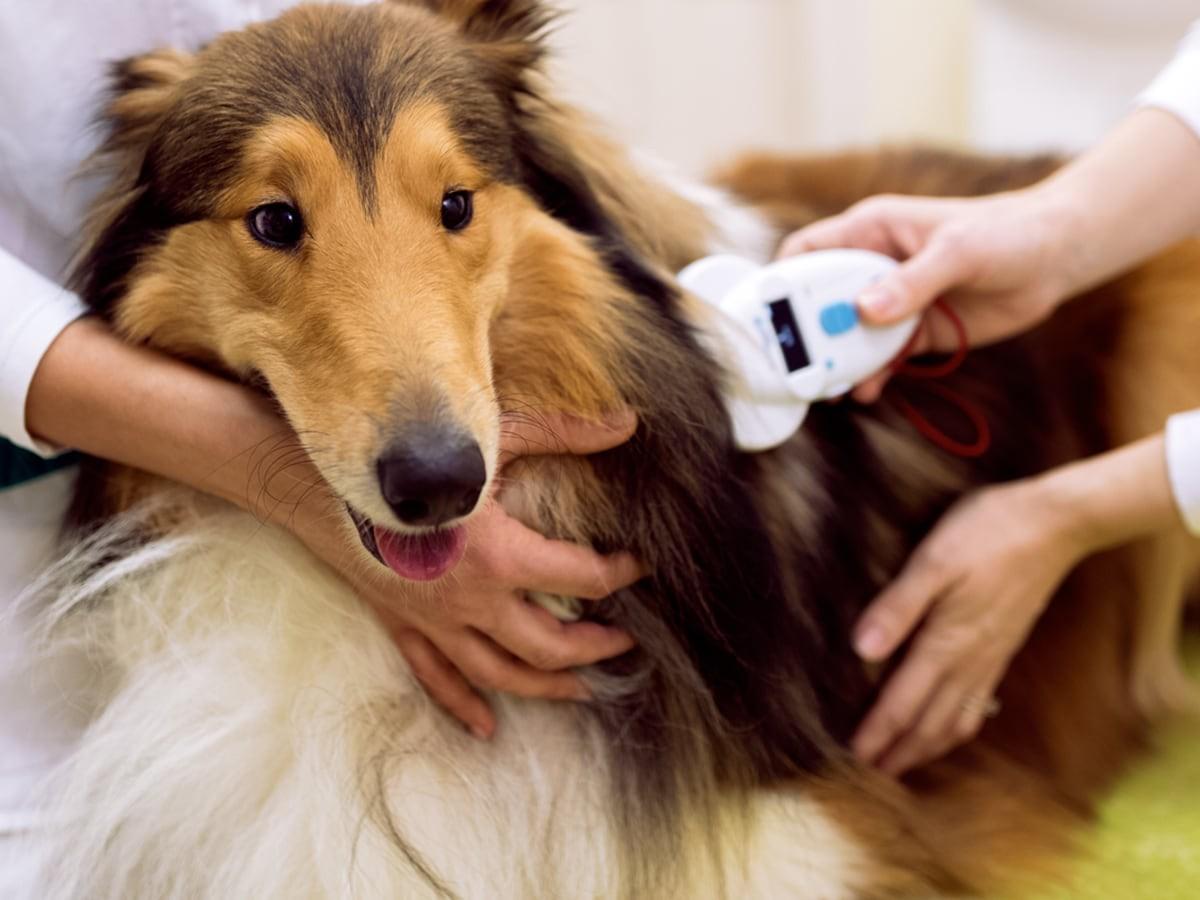When you get a new puppy, there is a long list of known to-dos that all veterinarians and other canine experts agree on. This includes choosing healthy and high-quality dog food, buying lots of chew-friendly toys, starting training and discipline early, getting them spayed or neutered if needed, and more. However, you might also want to get your puppy microchipped as well.
Microchipping can be an unfamiliar concept, especially if this is your first puppy. It is a frequent debate amongst dog owners if it is safe or necessary. At Spot Pet Insurance, we want you and your pooch to live a healthy and happy life together. We are here to help you decipher difficult-to-understand concepts like microchipping so you are able to make informed decisions and provide your pup with the best possible care.
What is Microchipping?
A microchip is around the size of a grain of rice and can be inserted under the skin of your dog. It uses radiofrequency to help identify and relocate your pup if he or she goes missing. Veterinarian clinics and animal shelters have scanners that can read the microchips, which all have unique identification numbers. It is important not to confuse microchips with GPS tracking devices. Although they can help locate your pup if someone scans them and finds your contact information, the chip alone cannot tell you the exact location of your dog.
Microchips are normally inserted in the tissue around your dog’s shoulder blades through a needle that will feel no different to pets than a typical vaccination. Get one implanted at your veterinarian’s office, at most animal shelters, and even at some breeders. The cost of implantation can vary based on where you go to receive it.
Although it is not required in all Canadian provinces, microchipping is required in many countries, including Australia and the United Kingdom. In Montreal, you must have your cat or dog microchipped before they are 6 months old. Some breeders, rescues, or shelters will already have your puppy chipped when you take them home. If it is your choice, we are here to help you understand the benefits of microchipping and why it is so strongly encouraged around the world.
Why Microchip Your Pup?
One study found that stray dogs with microchips were returned to their owners over 52% of the time. When a lost dog is taken in by an animal shelter, the first thing the shelter typically does is look for a chip. Based on statistics like these, many veterinarians recommend microchipping as one of the most effective and reliable methods for identification.
Although many argue that collars with tags have the same function as a microchip, these external identification methods can often break or easily be removed. Metal tags on collars can fade and become hard to read over time and are not as effective as a permanent microchip that resides safely inside of your pup. Microchips essentially have the same function as a collar’s tag with your contact information, yet they are far more reliable since they cannot fall off, break, or be removed without surgery.
Benefits of Microchipping
The statistics of microchip success stories alone are reason enough to invest in one for your new puppy; however, several other benefits to chipping are commonly overshadowed by myths of safety issues or personal information theft. The obvious, overarching benefit of microchipping is that shelters, veterinarians, and even some police stations will be able to return your dog to you if he or she goes missing if they have a microchip. However, it is also important to note that microchips are a low-cost, quick, and harmless procedure, and permanent without the need for replacement. Chips typically last as long as 25 years, which is longer than most pets’ life spans. Microchip databases also tend to be national. If your canine ventures to another state, you will still be able to relocate them through the chip.
Microchips do not expose your personal information, which is a common concern of pet owners. Update your address or contact information at any time if you happen to move or get a new phone. In fact, microchips are actually less revealing of information than a traditional dog collar which displays your name, address, and phone number to anyone who comes across it. Only the microchip company will be able to access your personal information. You have no reason to worry about your address falling into the wrong hands.
How to Use a Chip if Your Pup is Lost
When you get your pet’s microchip inserted, make sure you register the number on the chip to a national pet recovery database to input your contact information that can be used to reunite you with your missing pup. If you do not register yourself in the database, the chip will be useless for tracing your furry friend back to you. It is a good idea to enter multiple phone numbers or ways to contact you, so you don’t miss a crucial call telling you your dog has been found.
Spot Pet Insurance’s top priority is to help keep both you and your dog happy and healthy. Technologies like microchipping can be extremely helpful to helping ensure you two can live a long life together.
“What is the Cost to Microchip a Cat or Dog in Canada?” Hepper, https://www.hepper.com/ca/microchip-cat-or-dog-cost-canada, Jan. 2, 2024.
